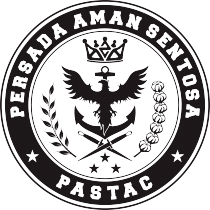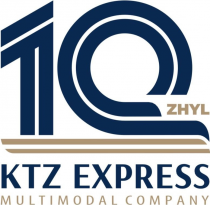Electrostatic Precipitator System Market Set to Reach USD 17.1 Billion by 2031 Amid Rising Demand for Air Pollution Control Solutions: - Market Research Intellect
The Electrostatic Precipitator System Market is driven by stringent environmental regulations aimed at reducing industrial emissions and improving air quality. Industries such as power generation, steel, and cement are investing in advanced pollution control technologies to comply with standards and minimize environmental impact. Additionally, rising awareness about air pollution's health risks has increased the demand for high-efficiency precipitators, which can capture fine particles and pollutants effectively. This focus on cleaner industrial processes continues to propel market growth.
LEWES, Del., Dec. 9, 2024 /PRNewswire/ -- The Electrostatic Precipitator System Market is anticipated to grow from USD 12.3 billion in 2024 to USD 17.1 billion by 2031, with a compound annual growth rate (CAGR) of approximately 4.8%. Growth is fueled by stringent environmental regulations and the increasing need for air pollution control in industries like power generation, cement, and steel manufacturing.
https://mma.prnewswire.com/media/2483702/Market_Research_Intellect_Logo.jpg
Download PDF Brochure: https://www.marketresearchintellect.com/download-sample/?rid=1047055
202 - Pages
126 - Tables
37 - Figures
Scope Of The Report
REPORT ATTRIBUTES
DETAILS
STUDY PERIOD
2020-2031
BASE YEAR 2023
FORECAST PERIOD
2024-2031
HISTORICAL PERIOD
2020-2023
UNIT
Value (USD Billion)
KEY COMPANIES PROFILED Mitsubishi Hitachi Power Systems, Siemens AG, General Electric, Thermax Limited, Babcock & Wilcox
Enterprises, Inc., ELEX AG, Hamon Group, Beltran Technologies, Inc., and Ducon Technologies Inc.
SEGMENTS COVERED
By Type, By Application And By Geography
CUSTOMIZATION SCOPE Free report customization (equivalent to up to 4 analysts' working days) with purchase. Addition or
alteration to country, regional & segment scope
Electrostatic Precipitator System Market Overview
1. Market Introduction and DefinitionElectrostatic precipitators (ESPs) are
air filtration devices used to control and minimize particulate emissions
in industries such as power generation, cement, steel, and chemicals.
These systems work by using an electric field to charge dust particles in
the gas stream, which are then collected on plates, effectively reducing
airborne pollutants. As environmental concerns grow globally, the demand
for ESPs is rising, especially in industrialized regions. The market's
growth is also attributed to advances in electrostatic precipitation
technology, which enhances collection efficiency, energy savings, and
ease of maintenance. This segment provides solutions to meet strict
regulations and growing pressure on companies to invest in eco-friendly
technology.
2. Key Market DriversStringent environmental regulations are a primary
driver for the ESP market. Governments and international organizations
mandate industrial facilities to adhere to strict emission norms, pushing
them to adopt high-efficiency air pollution control systems.
Additionally, awareness of pollution's impact on public health and the
environment is propelling industries to adopt ESPs to capture particulate
matter and harmful emissions. Growth in industrial sectors, such as power
plants and waste-to-energy facilities, which are significant sources of
emissions, further fuels demand. The ongoing shift towards sustainable
industrial practices underlines the need for reliable and efficient ESP
systems across various sectors.
3. Technological AdvancementsInnovations in ESP technology are making these
systems more efficient, cost-effective, and environmentally friendly.
Advanced ESP models now offer greater efficiency in capturing ultrafine
particles and minimizing energy consumption. Developments include hybrid
ESP systems that combine electrostatic precipitation with other
filtration methods, enhancing particulate collection rates and reducing
operational costs. Automation and real-time monitoring capabilities are
also being integrated, allowing for better control over emissions and
predictive maintenance. Such advancements are critical for industries
facing stricter environmental regulations, as they provide more precise
and sustainable solutions for pollution control.
4. Regional Market TrendsThe ESP market demonstrates significant regional
variations, with Asia-Pacific leading due to rapid industrialization,
especially in China and India. These regions face severe air pollution
challenges and stringent regulations, making ESPs essential in industrial
setups. North America and Europe also contribute substantially to the
market, with strong environmental policies and an established industrial
base that prioritizes advanced pollution control systems. Emerging
economies in Latin America and Africa are gradually adopting ESPs as they
industrialize and increase focus on sustainable practices. This regional
diversification highlights the universal need for pollution control,
though specific drivers vary by region.Download Sample Report Now:
https://www.marketresearchintellect.com/download-sample/?rid=1047055
5. Key Industry ApplicationsThe ESP market serves a range of industries,
each with specific requirements for emissions control. Power generation
is the largest sector, as coal-fired and waste-to-energy plants rely on
ESPs to limit particulate emissions. Cement and steel industries also
utilize ESPs to handle dust and other airborne pollutants from
manufacturing processes. Chemical and petrochemical sectors benefit from
ESPs to control volatile organic compounds (VOCs) and fine particles.
This adaptability across industries, coupled with evolving regulatory
frameworks, ensures steady demand for ESP systems, particularly those
customized to meet the unique needs of each sector.
6. Challenges and RestraintsDespite strong demand, the ESP market faces
challenges such as high installation and maintenance costs. Many
industries find the upfront investment for advanced ESP systems
significant, particularly in emerging markets where budget constraints
are prevalent. Furthermore, achieving regulatory compliance involves
continuous maintenance and monitoring, which can be cost-intensive.
Another challenge is competition from alternative filtration
technologies, like fabric filters, which offer similar efficiency in
particulate removal. Lastly, varying regional regulations make it complex
for companies to develop standardized ESP solutions, sometimes slowing
the adoption in regions with less stringent requirements.
7. Competitive LandscapeThe ESP market is highly competitive, with major
players investing in R&D to enhance system efficiency and reduce costs.
Key players include Mitsubishi Hitachi Power Systems, Siemens AG, and
Thermax, all of which offer a range of customized ESP solutions for
various industries. Strategic partnerships, mergers, and acquisitions are
common as companies seek to expand market presence and technological
capabilities. Additionally, companies are focusing on sustainability
initiatives and developing eco-friendly ESP systems to meet global demand
for green solutions. This competitive landscape drives innovation and
improved customer service, ultimately benefiting end-users.
8. Future Market OutlookLooking ahead, the ESP market is expected to
experience steady growth, driven by increasing industrialization,
particularly in emerging markets. Innovations focusing on energy
efficiency and reduced operational costs will play a vital role in market
expansion, as industries seek cost-effective compliance solutions. Hybrid
ESP technologies and IoT integration for real-time monitoring and
automation are likely to gain traction. As environmental standards
continue to tighten globally, industries will prioritize pollution
control technologies, positioning ESP systems as a crucial component in
achieving sustainable, cleaner operations. The market is poised for
long-term growth as global environmental awareness and regulation
strengthen.
Geographic Dominance:
The Asia-Pacific region holds a dominant position in the Electrostatic Precipitator (ESP) System Market, largely driven by rapid industrialization and urbanization, particularly in China and India. These countries face severe air pollution challenges and have implemented stringent environmental regulations to mitigate industrial emissions. China, as the world's largest coal consumer, relies heavily on ESPs in power plants, cement production, and steel manufacturing to meet its pollution control mandates. India follows closely, with industrial expansion and government initiatives like the National Clean Air Programme (NCAP), which push industries to adopt advanced air filtration systems, including ESPs. North America and Europe also represent significant market shares due to established environmental regulations and a mature industrial base. The U.S. and EU countries emphasize emission reduction, driving demand for efficient pollution control systems. Meanwhile, emerging regions like Latin America and the Middle East are gradually adopting ESPs as they increase focus on sustainable industrial practices. This geographic diversity underlines a strong, global demand trajectory for ESP technology across diverse industrial applications.
Electrostatic Precipitator System Market Key Players Shaping the Future
Key players shaping the future of the Electrostatic Precipitator System Market include Mitsubishi Hitachi Power Systems, Siemens AG, General Electric, Thermax Limited, Babcock & Wilcox Enterprises, Inc., ELEX AG, Hamon Group, Beltran Technologies, Inc., and Ducon Technologies Inc.
Electrostatic Precipitator System Market Segment Analysis
The Electrostatic Precipitator System market is segmented based on By Type, By Application and Geography, offering a comprehensive analysis of the industry.
By Type:
-- Dry Electrostatic Precipitators
-- Wet Electrostatic Precipitators
By Application:
-- Power Generation
-- Cement
-- Steel
-- Chemicals
-- Others
By Geography:
-- North America
-- Europe
-- Asia-Pacific
-- Latin America
-- Middle East & Africa
Automotive and Transportation:
In the Automotive and Transportation sector, the Electrostatic Precipitator System Market is gaining attention as a pollution control solution for exhaust emissions, particularly in large transportation hubs and fleet operations. ESP systems are being explored for their potential in capturing fine particulate matter from vehicle exhaust, especially in urban areas facing high air pollution levels. As electric and hybrid vehicle adoption grows, ESP systems are also being considered for use in industries supporting automotive manufacturing, where they help control airborne particulates in painting and coating processes. The increasing focus on sustainable transportation fuels growth in this market segment.
Our related Reports
Global Single Use Electrostatic Precipitator System Market is categorized based on Type (420 Stainless Steel, 40Cr13 Stainless Steel, 30Cr13 Stainless Steel, 2Cr13 Stainless Steel, Others) and Application (Hospitals, Ophthalmic Clinics, Others) and geographical regions
Global Classroom Messaging Software market size and forecast is categorized based on Type (Cloud Based, Web Based) and Application (Large Enterprises, SMEs) and geographical regions
Global Silicon carbide sic semiconductor market size forecast is categorized based on Type (SIC Power Semiconductors, SIC Power Semiconductor Devices, SIC Power Diode Nodes) and Application (Automotive, Aerospace and Defense, Computers, Consumer Electronics, Industrial, Healthcare, Power Sector, Solar) and geographical regions
Global Automotive Pneumatic Disc Brake Market is categorized based on Type (Single-piston Pneumatic Disc Brakes, Multi-piston Pneumatic Disc Brakes, Caliper Pneumatic Disc Brakes, Rotor Pneumatic Disc Brakes, Drum-in-hat Pneumatic Disc Brakes) and Application (Passenger Cars, Commercial Vehicles, Racing Cars, Heavy-duty Trucks, Off-road Vehicles) and geographical regions
Global Antibacterial Nano Coatings Market is categorized based on Application (Silver Nanoparticle Coatings, Copper Nanoparticle Coatings, Zinc Oxide Nanoparticle Coatings) and Product (Medical Devices (Implants, Catheters), Food Packaging, Textiles, Healthcare Surfaces) and geographical regions
Global Antibacterial in Agriculture Market is categorized based on Type (Amide Antibacterials, Antibiotic Antibacterials, Copper-Based Antibacterials, Dithiocarbamate Antibacterials, Other Types) and Application (Foliar Spray, Soil Treatment, Other Modes of Application) and geographical regions
About Us: Market Research Intellect
Welcome to Market Research Intellect, where we lead the way in global research and consulting, proudly serving over 5,000 esteemed clients worldwide. Our mission is to empower your business with cutting-edge analytical research solutions, delivering comprehensive, information-rich studies that are pivotal for strategic growth and critical revenue decisions.
Unmatched Expertise: Our formidable team of 250 highly skilled analysts and subject matter experts (SMEs) is the backbone of our operations. With extensive training in advanced data collection and governance, we delve into over 25,000 high-impact and niche markets. Our experts seamlessly integrate modern data collection techniques, robust research methodologies, and collective industry experience to produce precise, insightful, and actionable research.
Diverse Industry Coverage: We cater to a wide array of industries, ensuring that our insights are both relevant and specialized. Our expertise spans: Energy, Technology, Manufacturing and Construction, Chemicals and Materials, Food and Beverages
Having collaborated with numerous Fortune 2000 companies, we bring unparalleled experience and reliability to meet all your research needs. Our proven track record reflects our commitment to excellence and client satisfaction.
Contact Us:
Mr. Edwyne Fernandes
Market Research Intellect
Call Us on: +1 743 222 5439
Email: sales@marketresearchintellect.com
Web: https://www.marketresearchintellect.com/
LinkedIn: https://www.linkedIn.com/company/marketresearchintellect
Twitter: https://x.com/intellectmr
Logo: https://mma.prnewswire.com/media/2483702/Market_Research_Intellect_Logo.jpg
SOURCE Market Research Intellect



